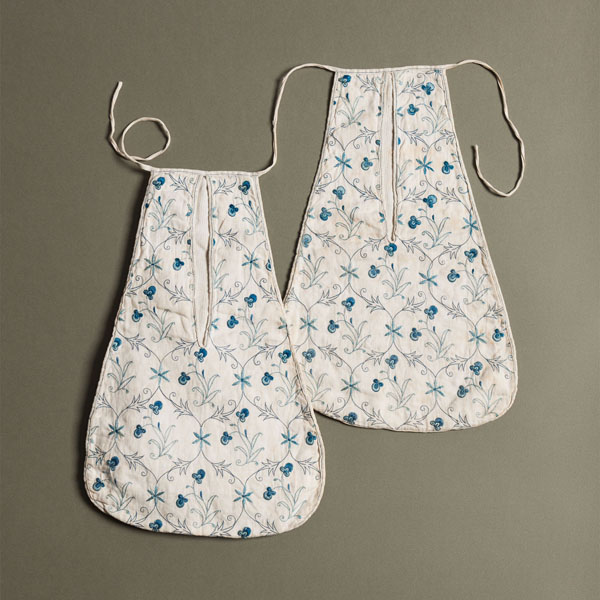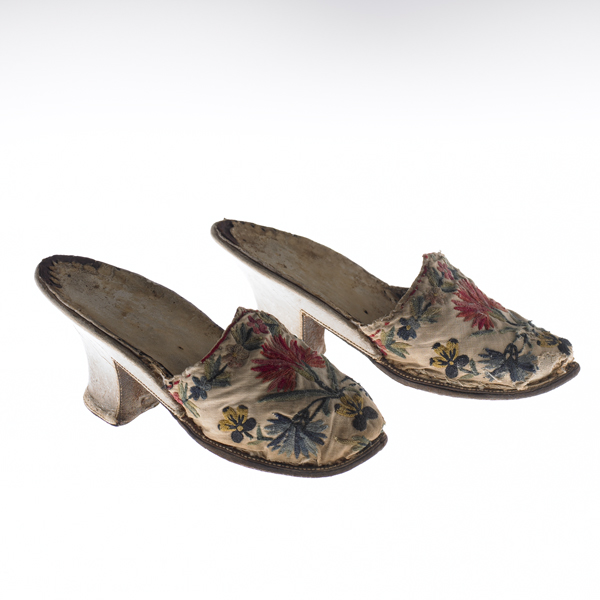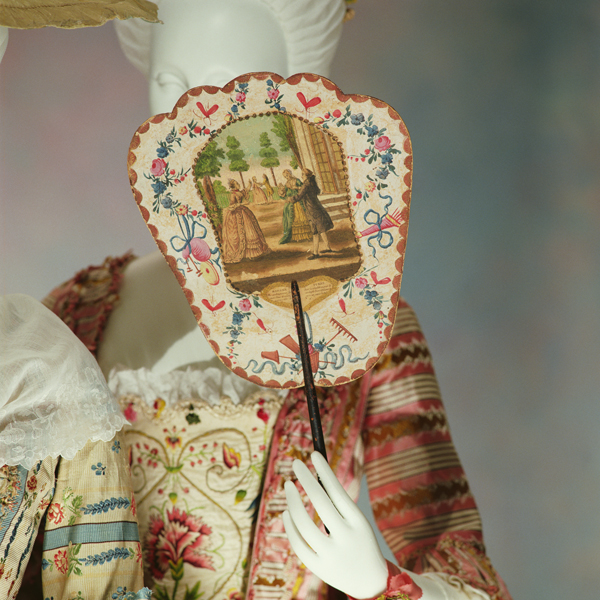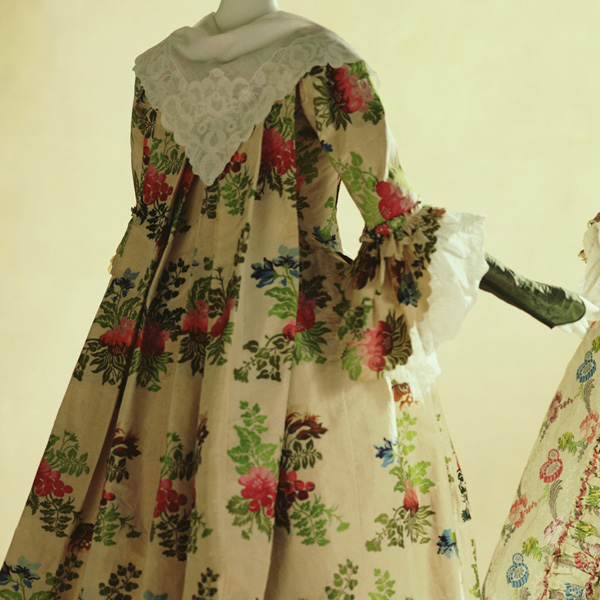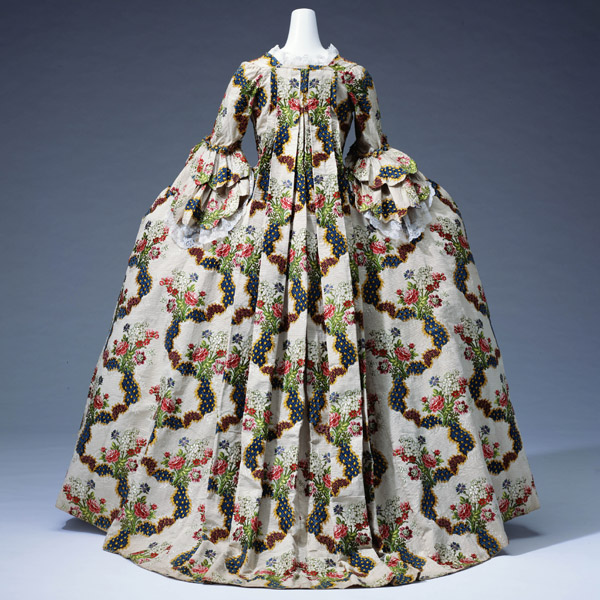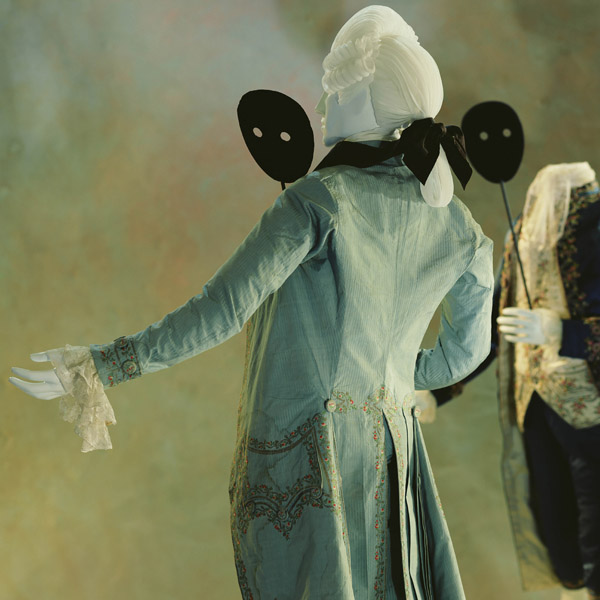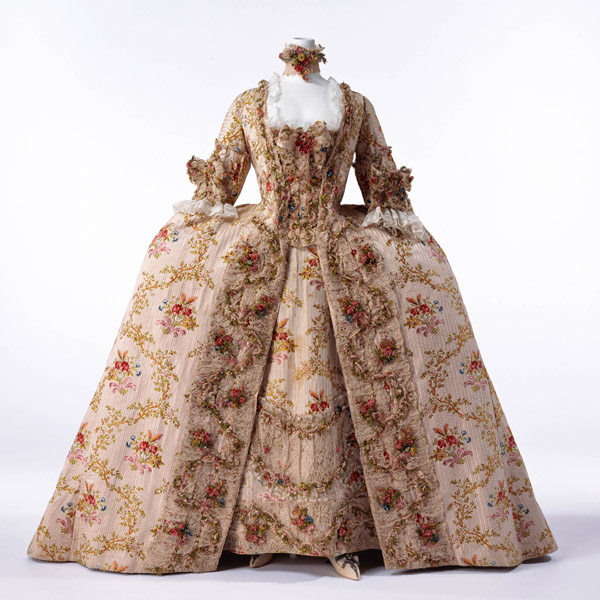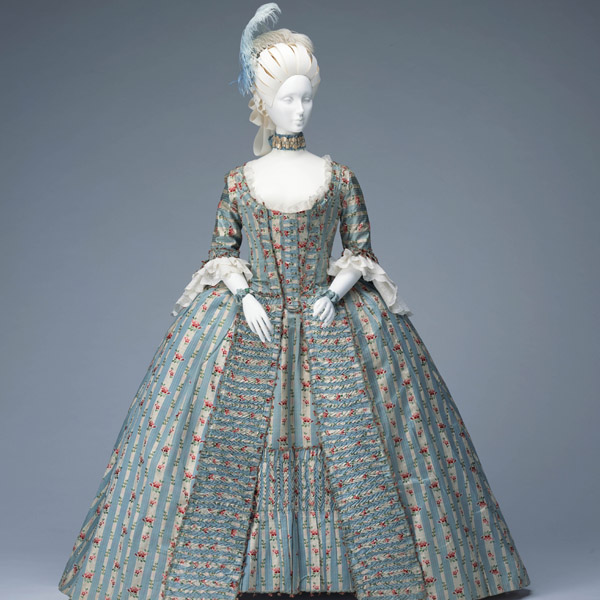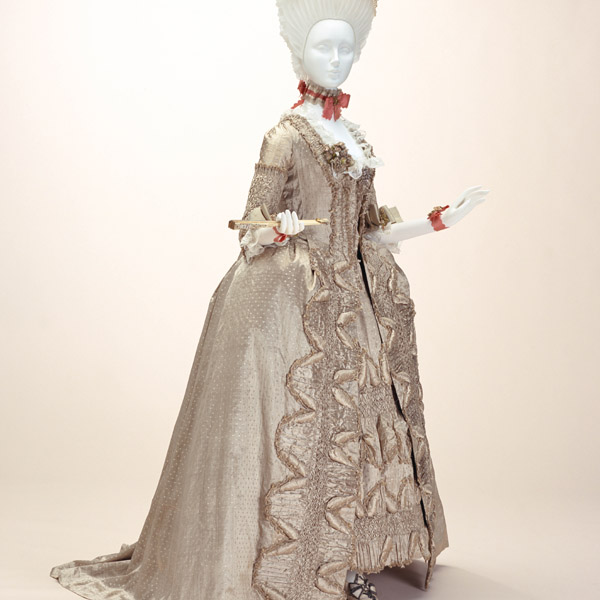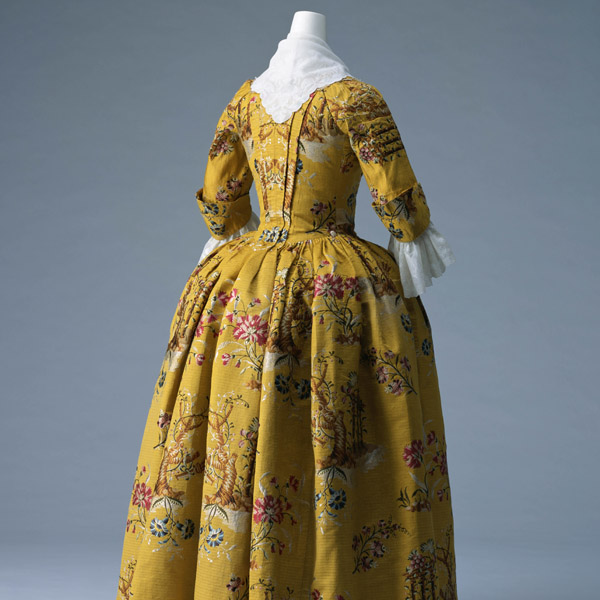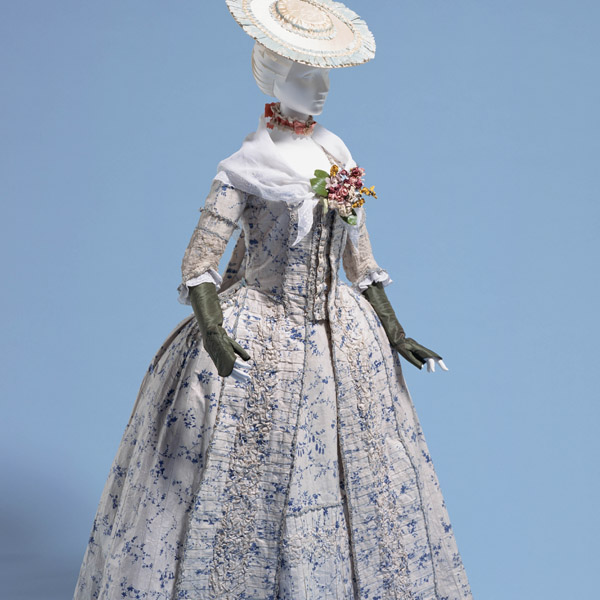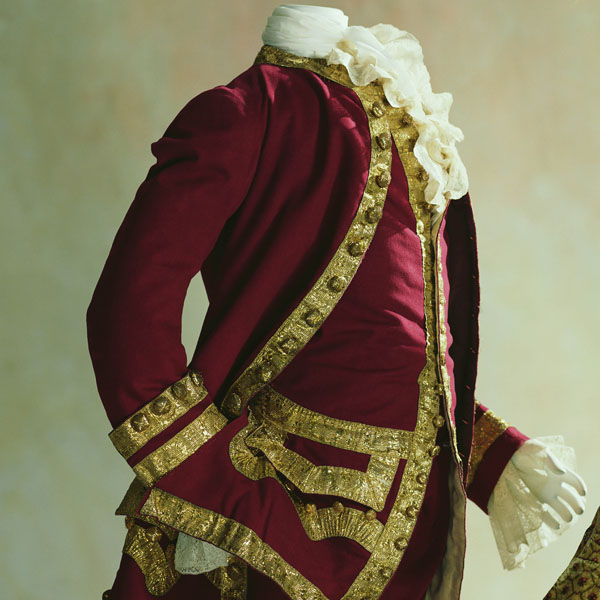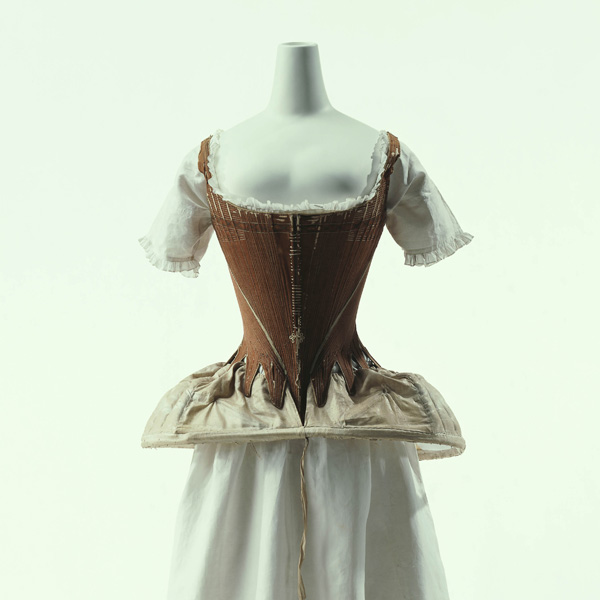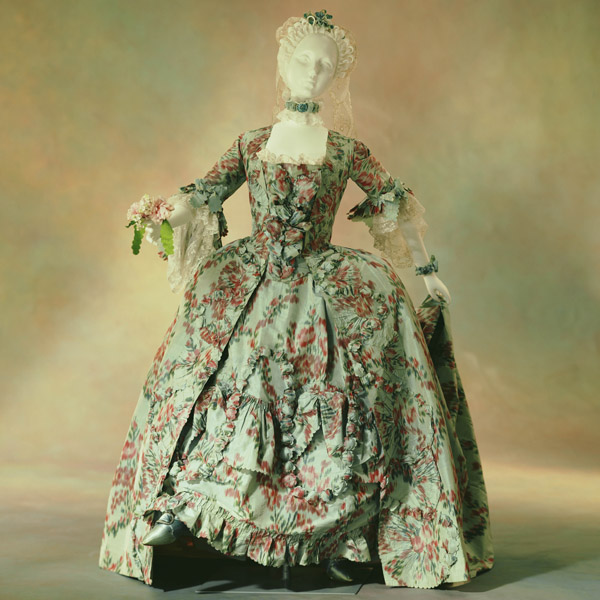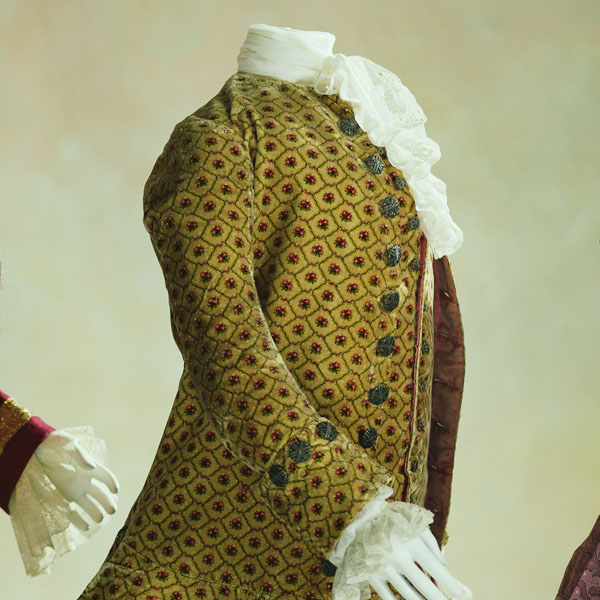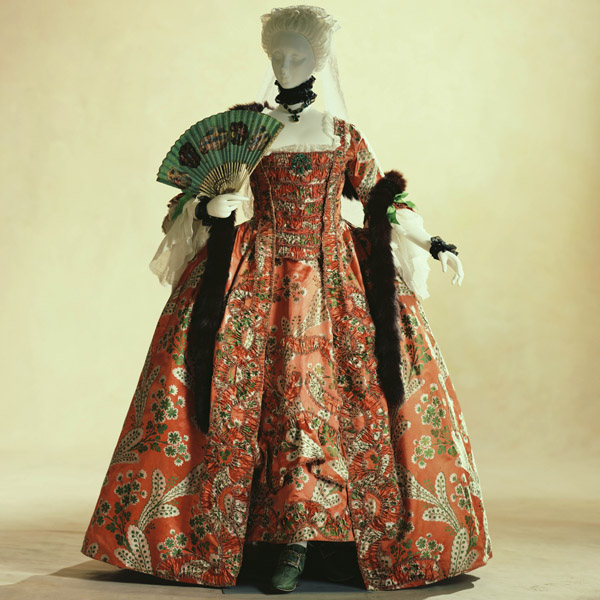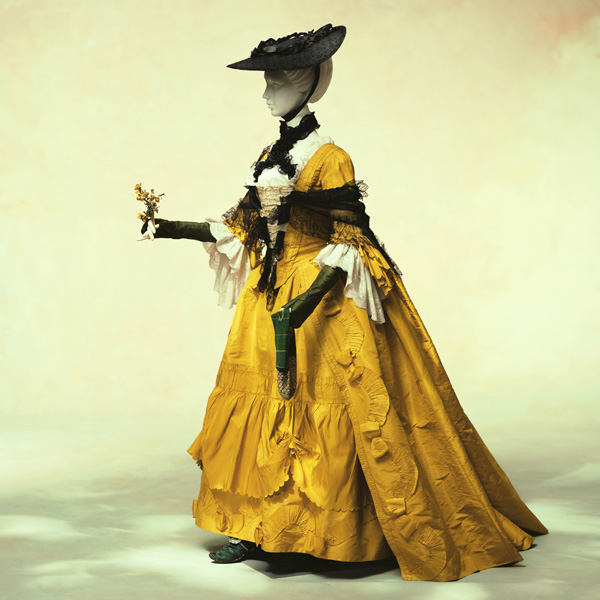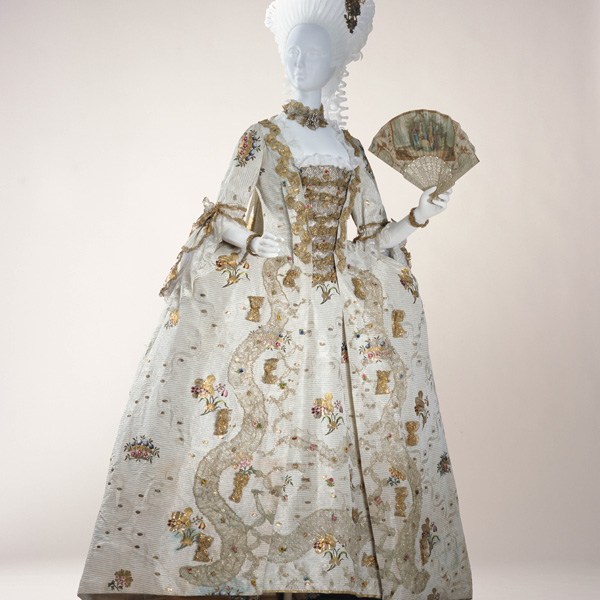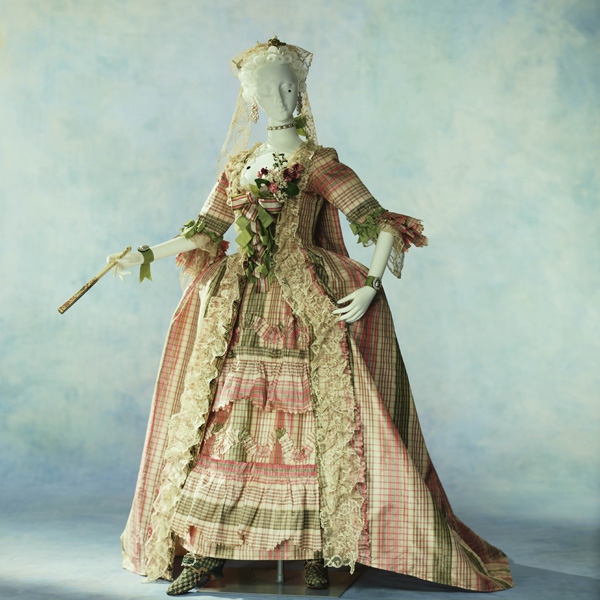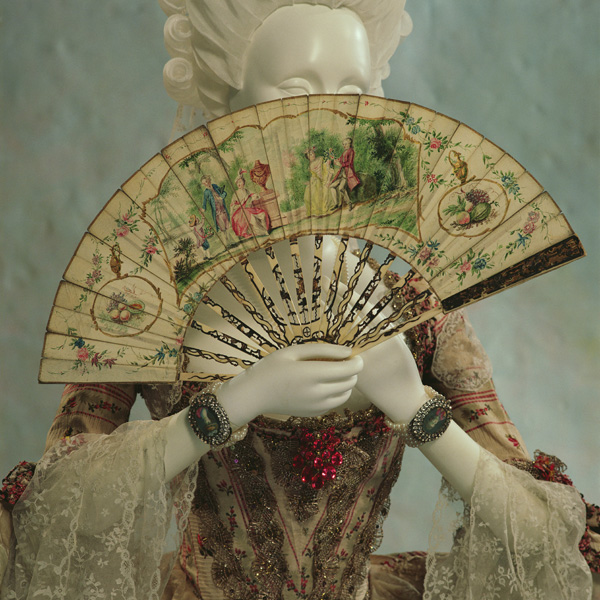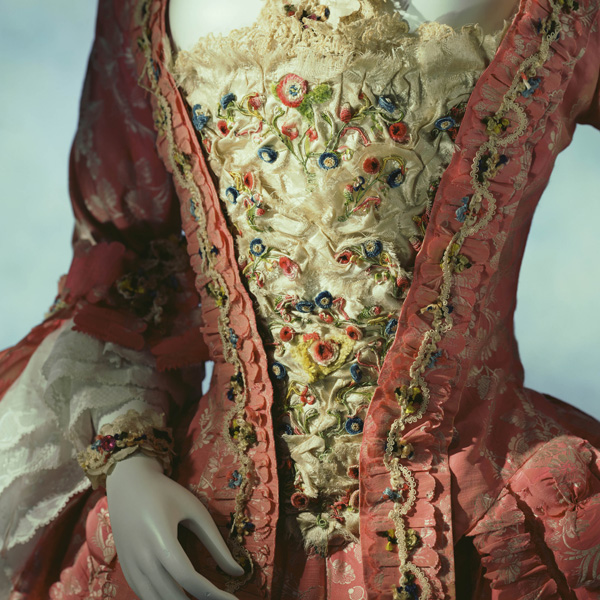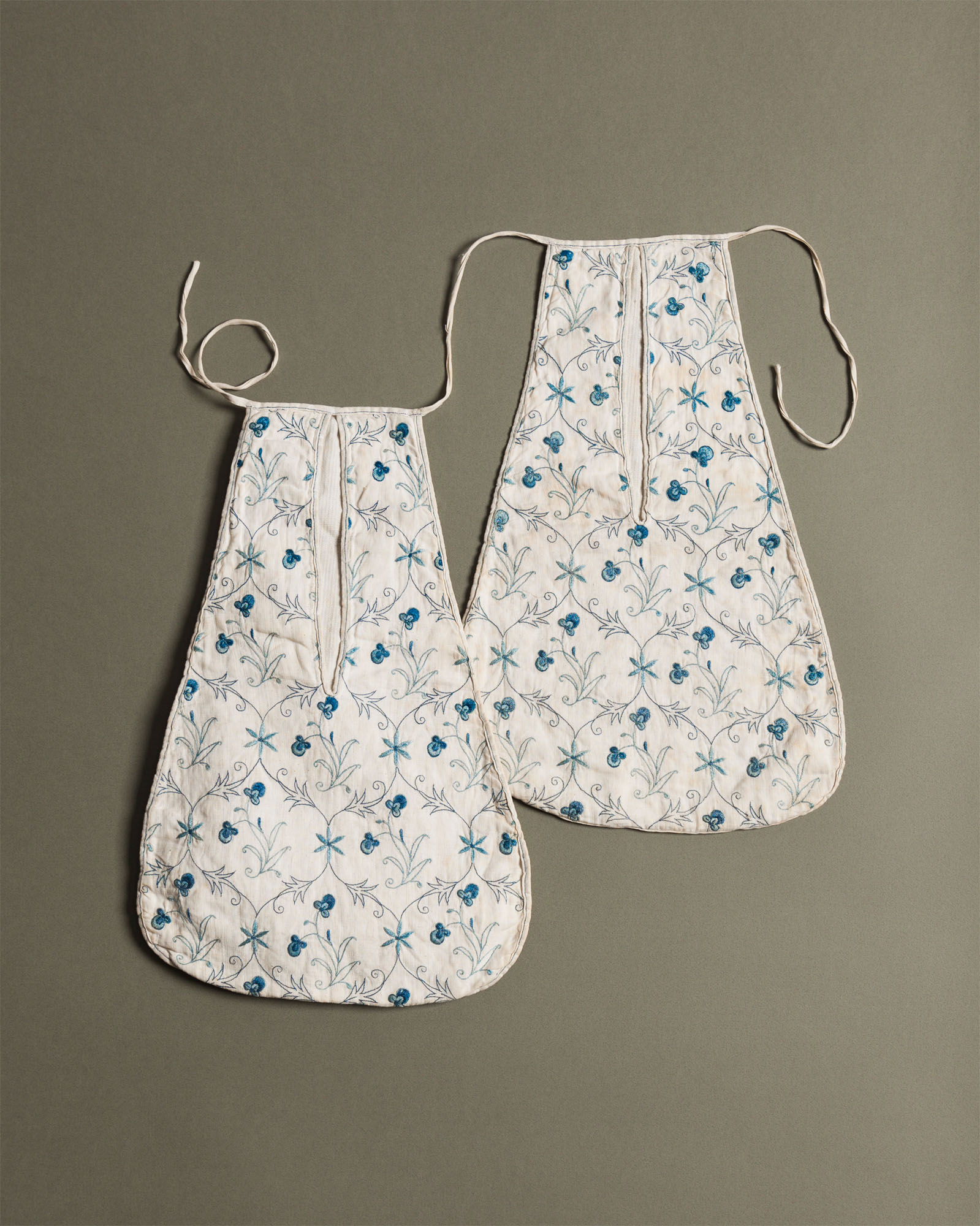
© The Kyoto Costume Institute, photo by Mai Narita
You can enlarge by putting the mouse cursor on the image.
1770s - unknown (Country)
- Material
- White linen plain weave with strings, blue silk embroidery with floral pattern.
- Dimension
- 39.5 cm (length) / 25.5 cm (width)
- Inventory Number(s)
- AC5660 87-32
These pockets were used by upper class women during the 18th century to hold their personal belongings. There is a slit at the front to enable the wearer to put things into and take things out of the pocket. The floral motif has been embroidered using outline stitch and satin stitch in different shades of blue silk to create a repetitive pattern.
Women used to wear attached pockets such as these, as the handbags of the time were small and not very practical, while dresses often did not have pockets. The pocket was attached to a cord tied around the waist and over the undergarment, over which the dress was worn. This pair of pockets was worn so that they could be accessed by the wearer’s hands through slits at the waist on either side of their dress. Although the pockets, like garter belts, are not visible when worn, they have been decorated with beautiful embroidery.
 Digital Archives
Digital Archives